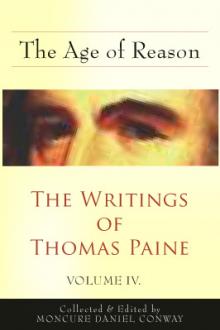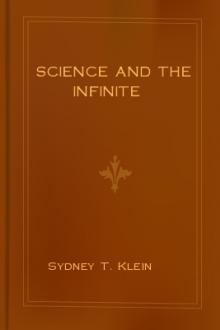How to Analyze People on Sight - Elsie Lincoln Benedict (e novels for free .txt) 📗

- Author: Elsie Lincoln Benedict
- Performer: -
Book online «How to Analyze People on Sight - Elsie Lincoln Benedict (e novels for free .txt) 📗». Author Elsie Lincoln Benedict
The extreme type, of which we are treating in this chapter, is shorter and heavier than the average. But his heaviness is due to muscle instead of fat. He has the appearance of standing firmly, solidly upon the ground, of being stalwart and strong.
¶ The Muscular's shoulders stand out more nearly at right angles than those of any other type and are much broader in proportion to his height. The Alimentive has sloping shoulders and the Thoracic inclines to high shoulders. But the shoulders of the pure Muscular are straighter and have a squareness where the Alimentive's have curves. This accounts for the fact that most of the square shouldered men you have known were not tall men, but medium or below medium in height. The wide square shoulders do not accompany any other pure type, though naturally they may be present in an individual who is a combination.
¶ The arms of pure Musculars are longer in proportion to the body than the arms of other types. The arms of the Alimentive are short for his body but the extreme Muscular's arms are always anywhere from slightly longer to very much longer than his height would lead you to expect.
¶ A "square head" is the first thing you think of when you look at a pure Muscular. His head has no such decided digressions from the normal as the round head of the Alimentive or the kite-shaped head of the Thoracic. It is not high for his body like the Thoracic's nor small for his body like the Alimentive's, but is of average proportions.
¶ A distinctive feature of this type is his thick neck. It is not fat like that of the Alimentive nor medium long like that of the Thoracic but has unusual muscularity and strength.
This is one of the chief indications of the Muscular's strength. A sturdy neck is one of the most significant indications of physical prowess and longevity, while the frail neck—of which we shall speak in connection with the fifth type—is always a sign of the physical frailty which endangers life. The thickness of his neck may sometimes give you the impression that the Muscular head is small but if you will look again you will see that it is normal for his bodily size.
¶ Looking at him from directly in front you will see that the Muscular's face gives you an impression of squareness. (See Chart 6) You will also notice that his side-head, cheeks and jaw run up and down in such a way as to give him a right-angled face.
¶ A broad jaw is another characteristic of this type. Not only is it square, looked at from the front, but you are pretty sure to note that the jaw bones, as they proceed downward under the ear, tend to make a right-angled turn at the corners instead of a rounded curve.
These dimensions tend to give the whole lower part of the Muscular's face a box-like appearance. It is considered becoming to men but robs its female owners of the delicate, pointed chin so much desired by women.
¶ Notice the hands of the people you meet and you will be surprised to see how different and how interesting they are. Their size, shape and structure as seen from the back of the hand are especially significant and tell us much more about the individual's nature than the palm does.
Perhaps you have thought that a hand was just a hand. But there are hands and hands. Each pure type has its own and no other is ever seen on the extreme of that type.
The hand of the Muscular, like all the rest of his body, is built in a series of squares. It runs out from the wrist and down in a straighter line and tends to right angles. (See Chart 6)
¶ "Spatulate fingers"—meaning fingers that are square or paddle-shaped at the tips—are sure indications of a decided muscular tendency.
He may have other types in combination but if his fingers are really square—"sawed off at the ends" in such a way as to give them large instead of tapering ends—that person has more than average muscularity and the activities of his life will tend in the directions referred to in this chapter.
¶ Musculars are the hand-workers of the world. They are the artisans, craftsmen, the constructors and builders.
We all tend to use most those organs or parts of the body which are largest and most highly developed. The Muscular's hand is proportionately larger than the hand of any other type. It has more muscle, that one element without which good hand work is impossible.
So it has followed inevitably that the manual work of the world is done largely by Musculars. Their hands are also so much more powerful that they do not tire easily.
¶ "The artist's hand" and "the artistic hand" are phrases long used but misused. Delicate tapering fingers were supposed in ancient times to denote artistic ability. The frail curving hand was also supposed to be a sign of artistic talent.
From the stage of old down to the movies of today the typical artist is pictured with a slight, slender hand.
This tapering-fingered hand denotes a keen sense of artistic values; a love of the esthetic, refined and beautiful; and real artistic appreciation, but not the ability to create.
¶ Before we explain this, kindly understand that we are speaking only of those arts which require hand work—and not of such arts as singing, dancing, or musical composition which could more properly be called artistic activities. We are referring only to those arts which depend for their creation upon the human hand—such as painting, architecture, craftsmanship, cartooning, sculpture, violin, piano, etc.
All these are created by square fingered people.
We are too much inclined to think of the products of these arts as being created out of sheer artistic sense, artistic taste or artistic insight. But a moment's reflection will show that every tangible artistic creation is the result of unusual hand work combined with gifted head work. Without a sure, strong, well-knit hand the ideas of the greatest artists could never have materialized. The lack of such a hand explains why the esthetic, the artistic-minded and the connoisseur do not create the beautiful things they appreciate.
¶ The hand must execute what the brain plans and it must be so perfect a mechanism for this that it responds to the most elusive inspirations of the artist. It must be a fifty per cent partner, else its owner will never produce real art.
No type has this strong, sure, co-ordinated hand-machine to any such degree as the Muscular.
The finger ends, which are of the utmost significance in the creation of artistic things, must be fitted with well developed muscles of extreme efficiency or the execution will fall short of the ideal pictured in the artist's mind.
The pure Muscular type seldom makes an artist, for, after all, inspired brain work is the other important element in the creation of art, and this is the forte of the fifth type. A combination of the fifth type with the Muscular makes most hand artists. A combination of the Muscular and Thoracic makes most singers. Every hand artist will be found to have spatulate-fingered hands—in short, muscular hands.
The hand of the famous craftsman, pianist, sculptor and painter, instead of being more frail and delicate, is always larger and heavier than that of the average person. Such a hand is a certain indication of the muscular element in that individual's makeup.
¶ Forceful, decisive movements also characterize this type. He is inclined to go at even the most trivial things with as much force as if the world depended on it.
Recently we were exhibiting a small pencil sharpener to a muscular friend. It was so sharp that it performed its work without pressure. But she took hold of it as if it were a piece of artillery and pushed the pencil into it with all the force she had.
When we remonstrated smilingly—for her face and hands are ultra-square—she said, "But I can't do anything lightly. I just naturally put that much force into everything."
¶ Heavy, powerful, forceful strides distinguish the walk of this type. If he has but ten steps to go he will start off as if beginning an around-the-world marathon.
¶ All Musculars notify people, by their walk, of their approach. They are unconscious of this loud incisive tread, and most of them will be surprised to read it here. But their friends will recognize it. The chances are that they have often spoken of it amongst themselves.
¶ The "steam-calliope voice" belongs almost always to a Muscular. He does his talking just as he does everything else—with all his might.
It is very difficult for the Muscular to "tone down" this powerful voice. His long-suffering friends will testify to this characteristic.
¶ This loud voice is a serious social handicap to him. His only chance of compensation for it lies in its use before juries, congregations or large audiences.
It might be noted here that every great orator has been largely of this type, and also that his fame came not alone from the things he said but from the stentorian tones in which he said them.
¶ Caruso, John McCormack and all other famous male singers had large thoracic systems, but in every instance it was combined with a large muscular development.
¶ When a Muscular sits down he does it as he does everything—with definiteness and force. He does not spill over as does the Alimentive nor drape himself gracefully like the Thoracic, but planks himself as though he meant business.
¶ Because he is especially built for it the Muscular is more active than any other type. Without muscles no organism could move itself from the spot in which it was born.
Biology teaches us that the stomach was the first thing evolved. The original one-call organism possessed but one function—digestion. As life progressed it became necessary to send nutriment to those parts of the organism not touched by the stomach.
For the purpose of reaching these suburbs there was involved the circulatory or Thoracic system, and this gave rise, as we have seen in the previous chapter, to the Thoracic type.
¶ As time went on movement became necessary, full development not being possible to any static organism. To meet this need muscles were evolved, and organic life began to move.
It was only a wiggle at first, but that wiggle has grown till today it includes every kind of labor, globe trotting and immigration.
The Muscular is fitted with the best traveling equipment of any type and invariably lives a life whose main reactions express these things.
¶ No matter what his work or play the Muscular will make more moves during the course of a day than other types. He loves action because his muscles, being over-equipped for it, keep urging him from within to do things.
As a result this type makes up most of the immigrants of the world. Italians, Poles, Greeks, Russians, Germans and Jews are largely of this type and these are the races furnishing the largest number of foreigners in America.
¶ Shut up a Muscular and you destroy him. His big muscle system cries out for something to do. He becomes restless, nervous and ill





Comments (0)